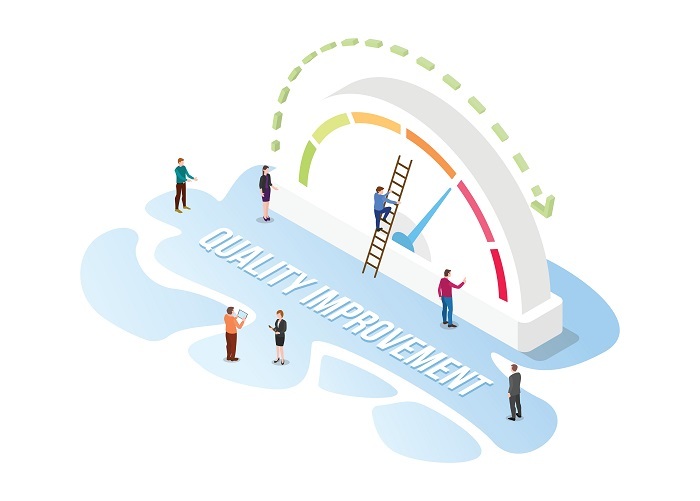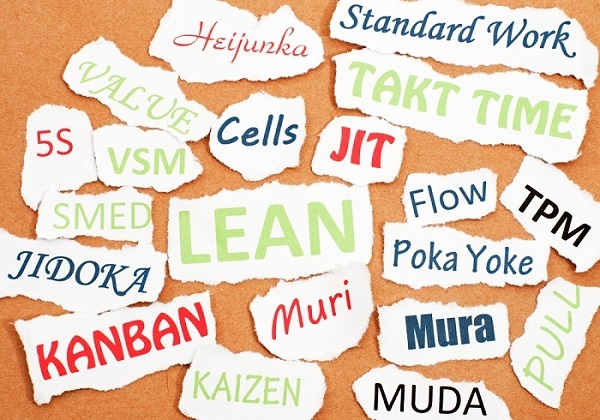
 Data Structure
Data Structure Networking
Networking RDBMS
RDBMS Operating System
Operating System Java
Java MS Excel
MS Excel iOS
iOS HTML
HTML CSS
CSS Android
Android Python
Python C Programming
C Programming C++
C++ C#
C# MongoDB
MongoDB MySQL
MySQL Javascript
Javascript PHP
PHP
- Selected Reading
- UPSC IAS Exams Notes
- Developer's Best Practices
- Questions and Answers
- Effective Resume Writing
- HR Interview Questions
- Computer Glossary
- Who is Who
What is the Role of Collaboration in Quality Management?
Collaborative Quality Management is an effective strategy for raising the bar on service and product quality through the use of cross-functional teams. Employees, clients, and vendors must all work together in this process to reach the organisation's quality goals. Productivity, communication, knowledge sharing, and iterative improvement are just some of the many benefits of collaborative quality management.

Collaborative quality management strategies for small businesses, cross-functional teams, and the connection between collaboration and continuous improvement are all covered in this article, along with the role of teamwork and leadership in quality assurance. Embracing collaboration and teamwork allows businesses to cultivate a quality culture that drives continuous improvement and yields the best possible outcomes for their customers.
The Benefits of Collaborative Quality Management
Collaborative Quality Management is a method for boosting product or service quality through teamwork and communication. In this method, all participants work together to guarantee that the final result lives up to or exceeds the expectations of the target audience. The advantages of a team-based approach to Quality Management are numerous.
Collaborative quality management practises can increase productivity by as much as 25%, according to a McKinsey study. This is because a more streamlined and effective process is the result of team members working together to identify and address any problems that may arise.
Increased communication and sharing of information are two additional benefits of Quality Management collaboration that can contribute to ongoing progress. Team members benefit from increased learning and development when they are encouraged to share their own expertise and experiences.
Collaborative Approaches to Quality Improvement

A collaborative approach to quality improvement is one in which multiple parties work together to boost the quality of a given product, service, or process. It means getting input from all levels of the organization, such as workers, clients, and vendors.
Collaboration is a great way to make sure that everyone is on the same page and that everyone's opinions are heard. By working together, businesses can boost output while decreasing expenses.
Last but not least, quality management relies on teamwork to foster an environment where people consistently strive to do better and are held accountable for achieving the best outcomes they can.
The Role of Teamwork in Quality Management
The goals of quality management can only be reached through a collaborative effort. When people come together to solve problems and make choices, they can benefit from the combined expertise of the group. This cooperative method is useful for spotting and fixing problems before they escalate and threaten the product's integrity.
Improved quality and productivity can result when team members share their ideas and methods. Successful teams have open lines of communication, a common understanding of their goals, and a willingness to listen to and learn from one another. By encouraging communication and cooperation among employees, businesses can develop a culture that promotes the constant improvement and benefits their customers.
Collaborative Quality Management Strategies for Small Businesses
Small businesses can benefit from Collaborative Quality Management by working with other companies in their field to share and implement best practices and enhance existing procedures. By pooling their resources, small businesses can save money, boost productivity, and delight their clientele.
Collaborative Quality Management techniques like "quality circles" are just one example. Quality circles are informal groups of workers who get together regularly to brainstorm ways to enhance the quality of their work environment. By pooling their resources and expertise, workers can find ways to enhance the value of their output.
The formation of partnerships with suppliers, customers, and other market participants is another tactic. When companies work together, they can pool their expertise and resources to create superior goods and services. If a small company is a supplier to a large one, for instance, the two companies could work together to raise the standard of the supplied components.
The Role of Leadership in Fostering Collaboration for Quality Improvement
Quality improvement through collaboration is impossible without strong leadership. Collaboration, in quality management, means working together to achieve a common goal, such as improving the quality of the services or goods being offered.
A good leader is one who encourages workers to work together for the greater good. They need to create a place where workers feel heard and respected, and where new ideas are welcomed and encouraged. Leaders need to make sure everyone is on the same page and knows what they need to do to succeed in reaching the objective through clear and consistent communication.
Leaders can encourage teamwork by encouraging the sharing of knowledge and skills from a variety of sources. In addition to creating a more positive and productive work environment, collaboration helps build trust and relationships among team members.
Collaborative Quality Management Techniques for Cross-Functional Teams
Methods used by interdisciplinary groups to coordinate effectively and deliver superior work are known as "Collaborative Quality Management Techniques for Cross-Functional Teams." The purpose of quality management is to guarantee that delivered goods and services are up to par. The team's ability to work together and share information, materials, and strategies is crucial to the success of this endeavor.
When teams from different departments work together, they can spot problems sooner in the process, come up with solutions more quickly, and boost the quality of the final product or service. Cross-functional teams can benefit from collaborative quality management strategies such as brainstorming sessions, process mapping, and continuous improvement initiatives. These methods facilitate two-way communication, teamwork, and conformity to agreed-upon quality benchmarks.
The Relationship Between Collaboration and Continuous Improvement

Working together towards a common goal is what we mean when we say "collaborate." Looking for ways to make things better is at the heart of the concept of "continuous improvement." Quality management relies on constant improvement, and this can only be achieved through teamwork. Better solutions often arise when people work together and share their thoughts.
The end result is better goods and services. Individuals working in isolation are more likely to miss something vital. When people pool their resources and talents, they may be able to spot errors or develop superior solutions.

